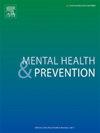为有语言障碍的青少年共同设计心理健康项目的研究方案
IF 2.4
Q2 Medicine
引用次数: 0
摘要
有口头语言障碍的年轻人面临心理健康挑战的风险更高,然而现有的儿童和青少年心理健康计划对这些人来说是无法获得的。本文概述了一项旨在共同设计适合有语言障碍的年轻人的心理健康干预计划的研究方案。方法利益相关者(10-16岁有语言障碍的年轻人、他们的父母/照顾者和服务提供者)将参与干预发展的基于经验的共同设计过程。干预措施的发展将遵循四步干预绘图程序:(1)进行需求评估,以找出问题;(2)通过识别与问题相关的行为和行为决定因素,制定变革目标矩阵;(3)选择基于理论的干预方法;(4)设计程序。结果将使用频率分析和内容分析等方法分析来自调查、访谈和共同设计研讨会的定量和定性数据。结果将是共同设计一个基于理论和利益相关者的需求和偏好的心理健康干预方案。这是已知的第一个为有语言障碍的年轻人共同设计心理健康项目的研究。该计划的实施和评估将在本研究的未来阶段报告。本文章由计算机程序翻译,如有差异,请以英文原文为准。
Study protocol for the co-design of a mental health program for young people with language difficulties
Objective
Young people experiencing oral language difficulties are at heightened risk of mental health challenges, yet existing child and adolescent mental health programs are inaccessible to these individuals. This paper outlines the protocol for a study aimed at co-designing a mental health intervention program suited to young people with language difficulties.
Methods
Stakeholders (young people aged 10-16 with language difficulties, their parents/caregivers, and service providers) will be involved in an experience-based co-design process for intervention development. Intervention development will follow a four-step Intervention Mapping process: (1) conduct a needs assessment to identify the problem; (2) develop matrices of change objectives by identifying behaviours and behavioural determinants relating to the problem; (3) select theory-based intervention methods; and (4) design a program.
Results
Quantitative and qualitative data from surveys, interviews, and co-design workshops will be analysed using methods such as frequency analyses and content analyses. The outcomes will be the co-design of a mental health intervention program based on theory and the needs and preferences of stakeholders.
Conclusion
This is the first known study to co-design a mental health program for young people with language difficulties. Implementation and evaluation of the program will be reported in a future phase of this research.
求助全文
通过发布文献求助,成功后即可免费获取论文全文。
去求助
来源期刊

Mental Health and Prevention
Medicine-Psychiatry and Mental Health
CiteScore
2.10
自引率
0.00%
发文量
22
审稿时长
24 days
 求助内容:
求助内容: 应助结果提醒方式:
应助结果提醒方式:


